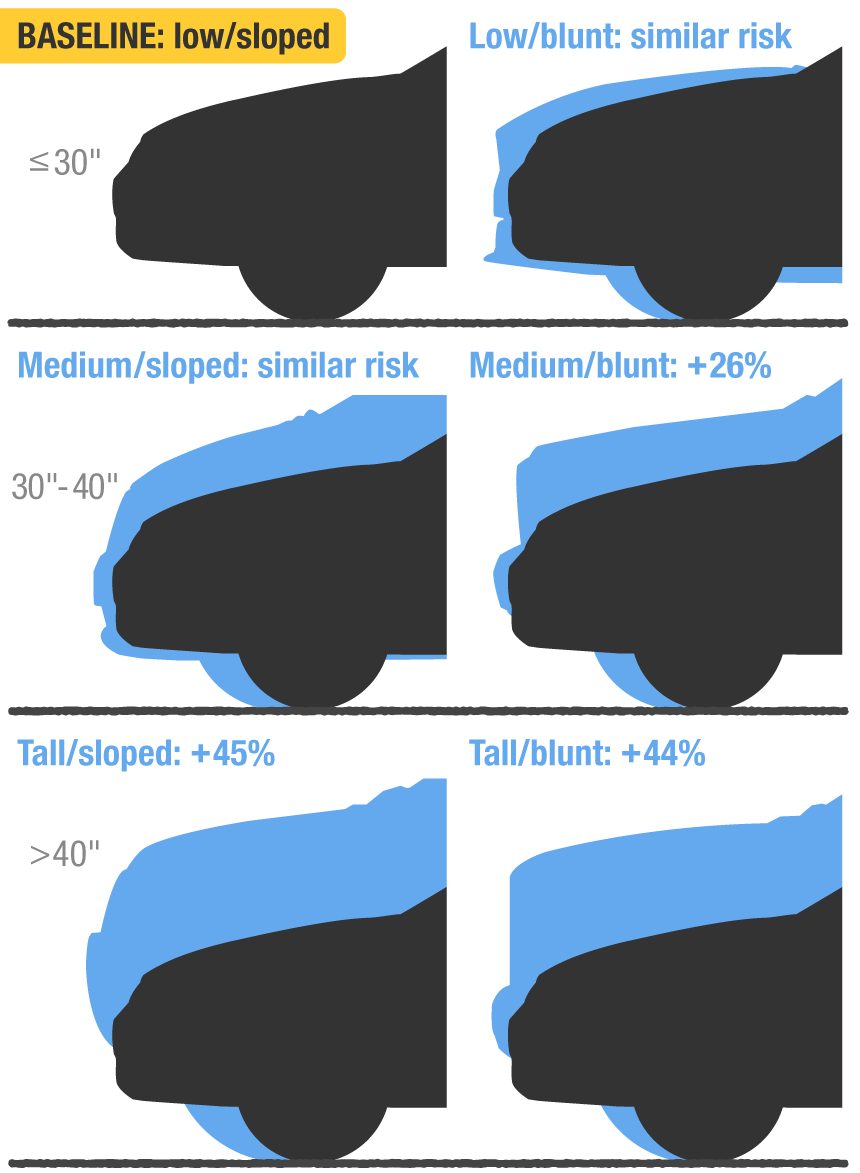Pedestrian deaths have increased 83% since reaching their low point in 2009 and account for 18% of crash fatalities. Two percent of people killed in motor vehicle crashes are bicyclists.
Traffic engineering improvements can reduce pedestrian and bicyclist crashes. Solutions include building median islands, creating bike lanes, installing flashing beacons at crosswalks, illuminating crosswalks at night and adjusting traffic signals to give pedestrians and bicyclists a head start. Lowering vehicle speeds can also reduce injury severity for pedestrians and bicyclists involved in crashes.
Crash avoidance features and other vehicle improvements may also make pedestrians and bicyclists safer. Forward collision avoidance systems are increasingly designed to detect pedestrians in a vehicle's path, and rear cameras may prevent backover crashes. Modifying the front structures of vehicles may reduce the severity of pedestrian injuries. Regulators in Europe and elsewhere have been encouraging pedestrian protection in vehicle design through their vehicle testing programs.
Helmets provide critical protection for bicyclists. Among a majority of bicyclists killed in crashes, head injuries are the most serious injuries. Helmet use has been estimated to reduce the odds of head injury by 50%.
Latest news
Pedestrian beacons that cycle through caution phases before signaling drivers to stop are best for busy crossing points, while yellow flashers are better for areas with less traffic, a new IIHS study shows.
January 22, 2025
Reflective clothing confounds vehicle tech
Reflective clothing makes pedestrians stand out to human drivers, but it may make them invisible to automated crash prevention systems.
January 9, 2025

